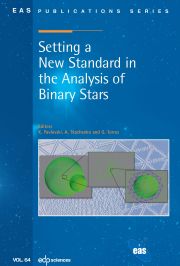Article contents
When Does the Intergalactic Medium Become Enriched?
Published online by Cambridge University Press: 21 April 2007
Abstract
We use cosmological hydrodynamic simulations including galacticfeedback based on observations of local starbursts to find aself-consistent evolutionary model capable of fitting the observationsof the intergalactic metallicity history as traced by C iv betweenz = 6.0 → 1.5. Our main finding is that despite the relativeinvariance in the measurement of Ω(C iv) as well as the columndensity and linewidth distributions over this range, continualfeedback from star formation-driven winds are able to reproduce theobservations, while an early enrichment scenario where a majority ofthe metals are injected into the IGM at z > 6 is disfavored. Theconstancy of the C iv observations results from a rising IGMmetallicity content balanced by a declining C iv ionization fractiondue to a 1) decreasing physical densities, 2) increasing ionizationbackground strength, and 3) metals becoming more shock-heated at lowerredshift. Our models predict that ~20× more metals areinjected into the IGM between z = 6 → 2 than at z > 6. Weshow that the median C iv absorber at z = 2 traces metals injected 1 Gyr earlier indicating that the typical metals traced by C iv areneither from very early times nor from very recent feedback.
- Type
- Research Article
- Information
- Copyright
- © EAS, EDP Sciences, 2007
- 3
- Cited by


